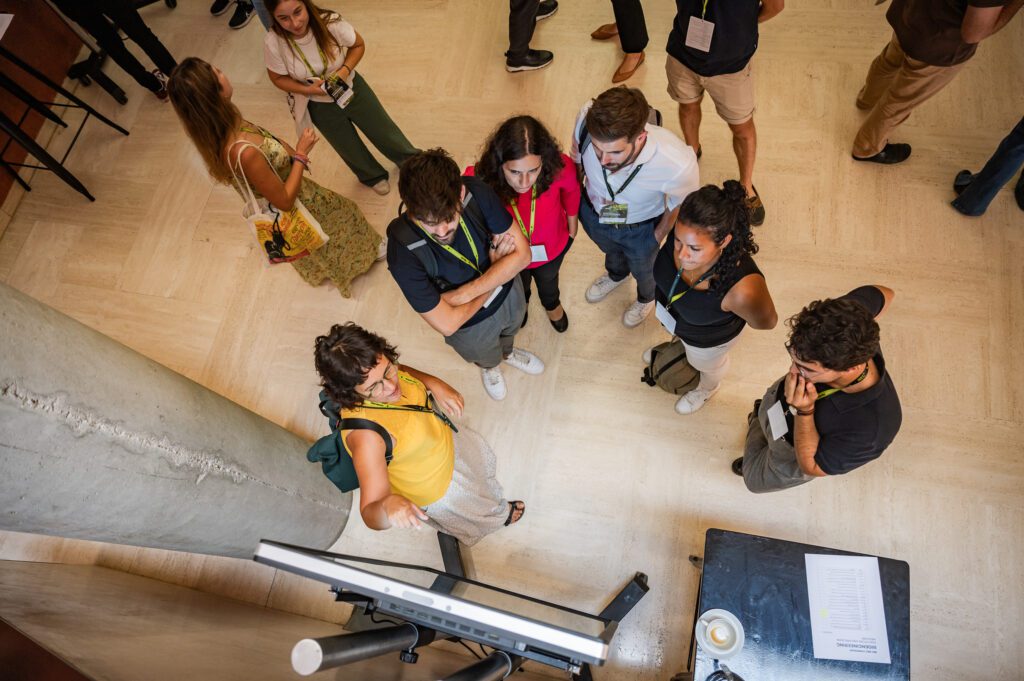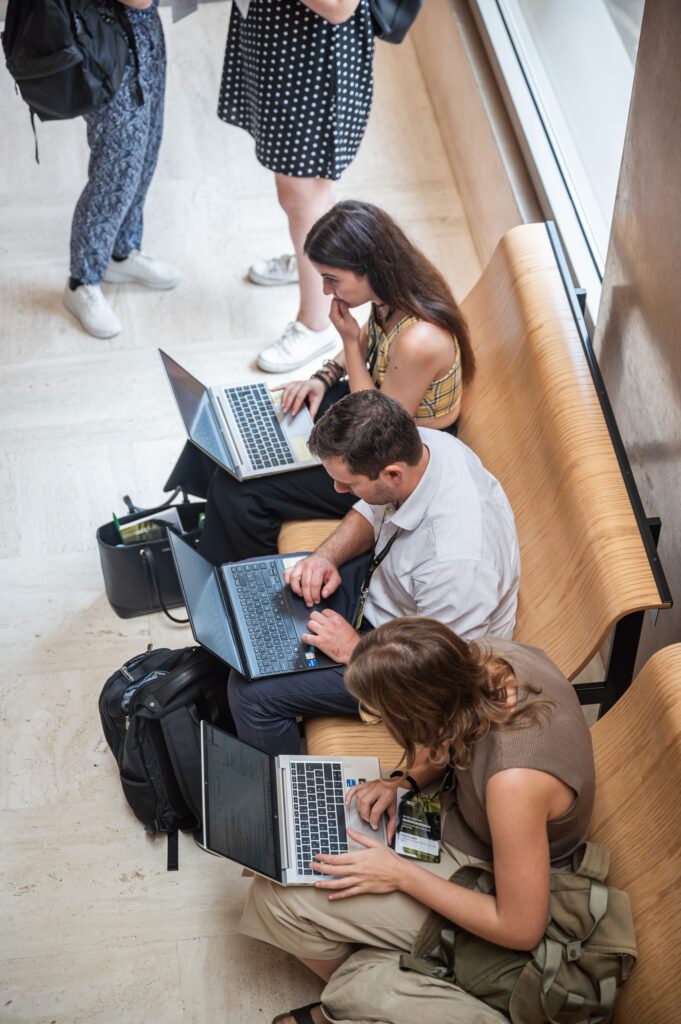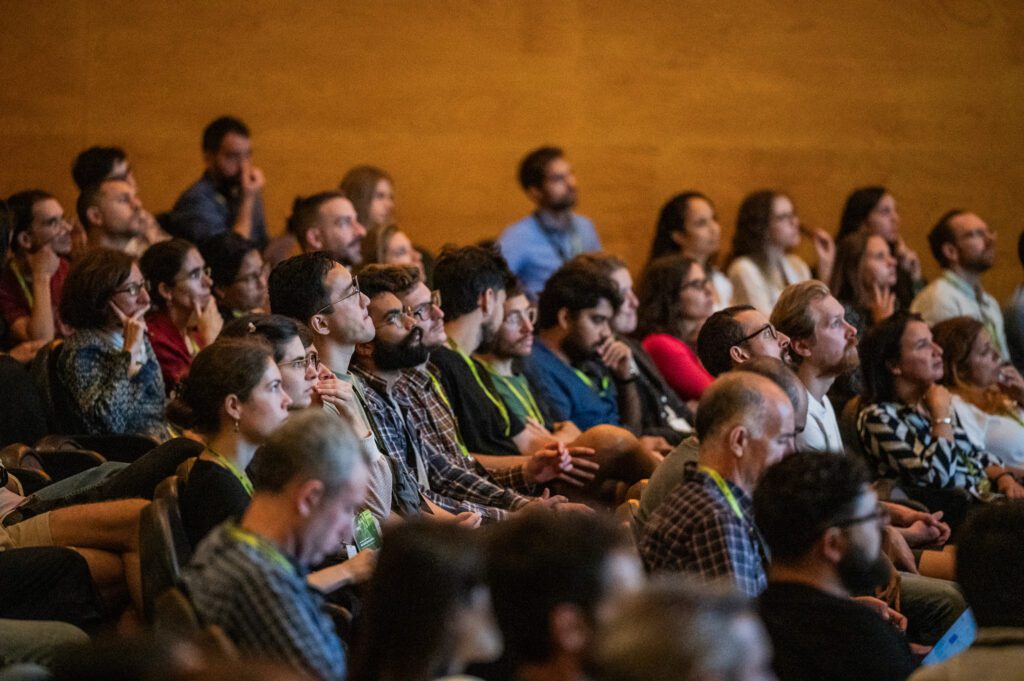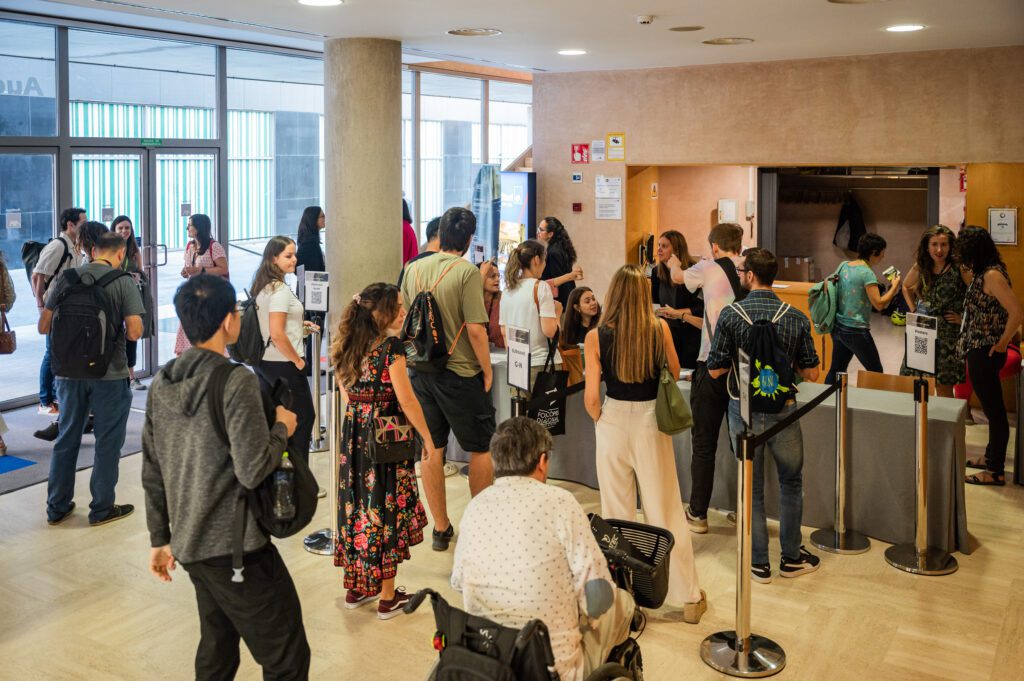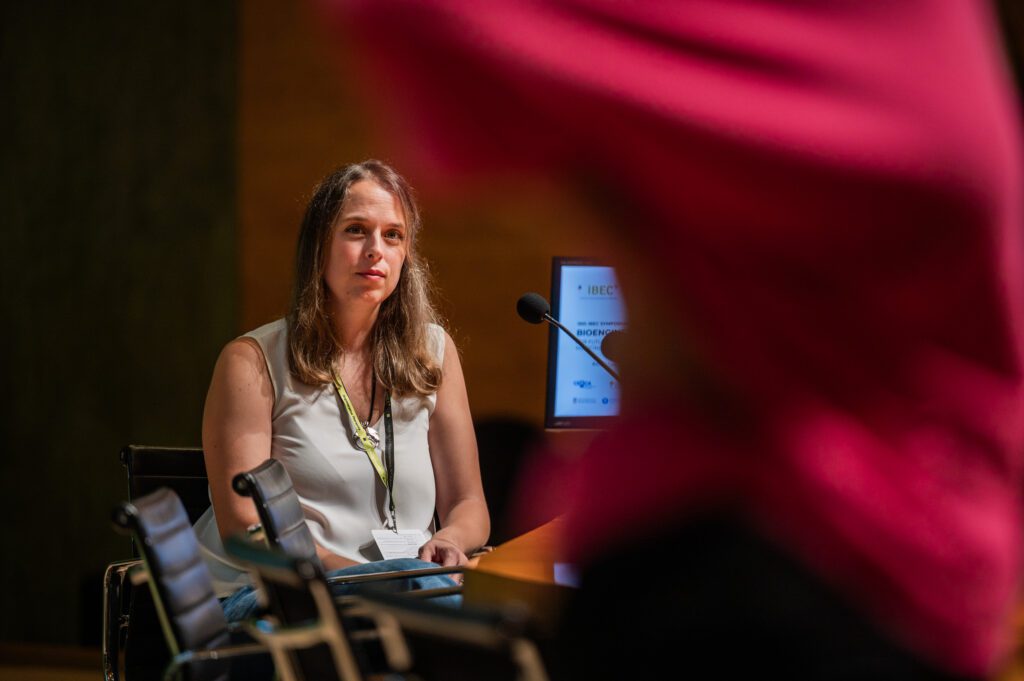IBEC’s 16th annual Symposium focused on ‘Bioengineering for Future and Precision Medicine,’ one of IBEC’s three key application areas. Approximately 300 people attended the event, including local and international researchers. It provided a multidisciplinary environment where experts from other institutions and the IBEC community had the opportunity to present their projects and exchange knowledge.
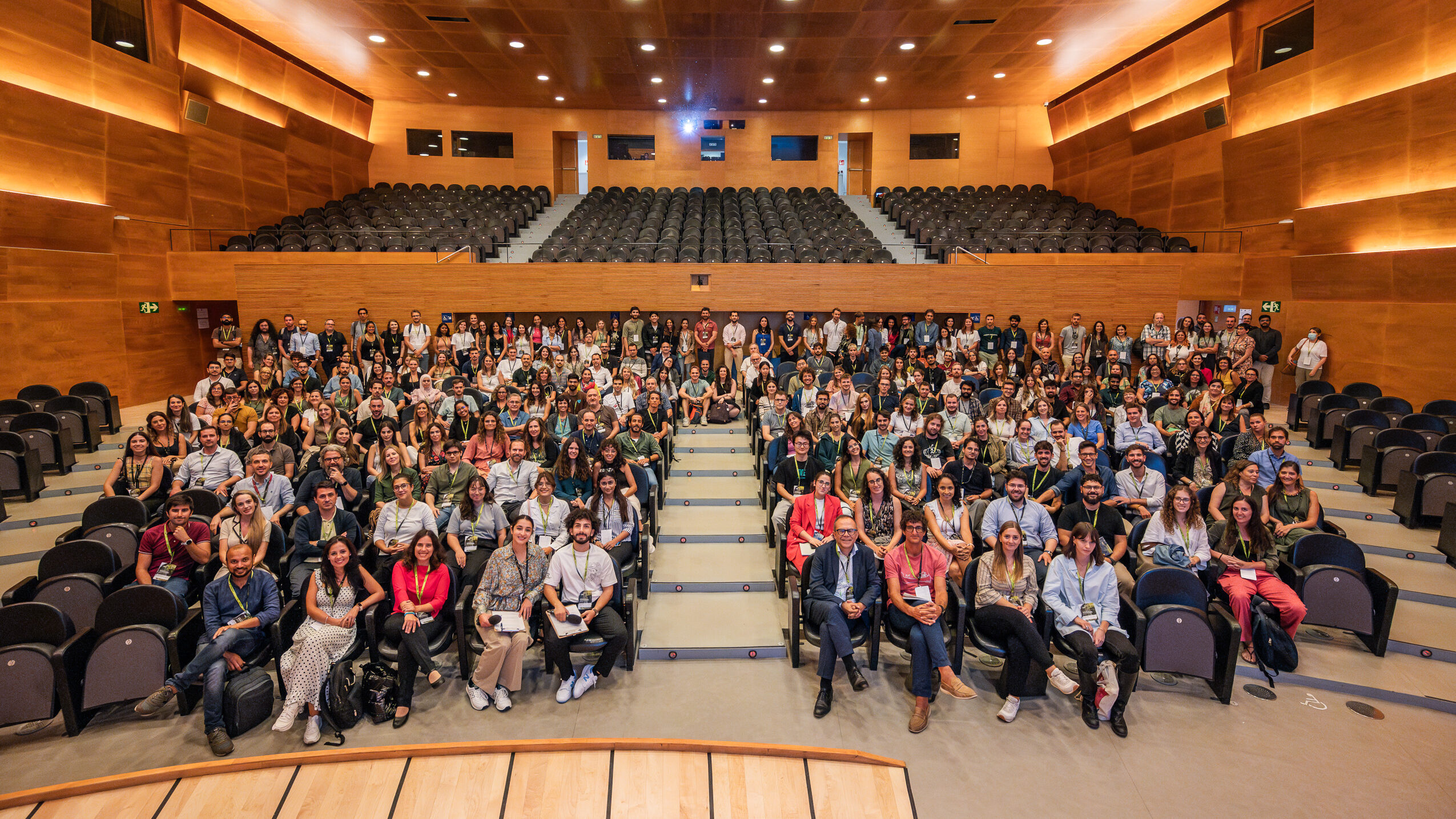
On Tuesday, October 3rd, the 16th IBEC Symposium took place. The event, primarily intended for the IBEC community but open to the entire scientific community, hosted approximately 300 attendees who had the opportunity to learn about the latest advancements in the field of bioengineering for future and precision medicine.
Marco Basile and Claudia Codano, researchers from IBEC’s Molecular Bionics group, served as the masters of ceremonies at the symposium. The day commenced with the welcoming remarks by representatives from IBEC’s founding institutions: Jordi Llorca, Vice-Rector for Research at the Polytechnic University of Catalonia (UPC); Ramon Maspons, Director of the Strategic Innovation Area of the Department of Health of the Generalitat de Catalunya; and Josep Samitier, Director of IBEC.
Speakers highlighted the benefits of interdisciplinary collaboration in science, one of IBEC’s pillars, while also emphasizing the importance of increasing funding for healthcare.
As is customary, Samitier initiated the series of talks with a presentation in which he provided a comprehensive overview of IBEC’s achievements over the past year and the institute’s future direction, reaffirming its commitment to excellence in research and biomedical innovation.
We have the collective capacity to go beyond the state of the art and build the future,” Samitier stated.
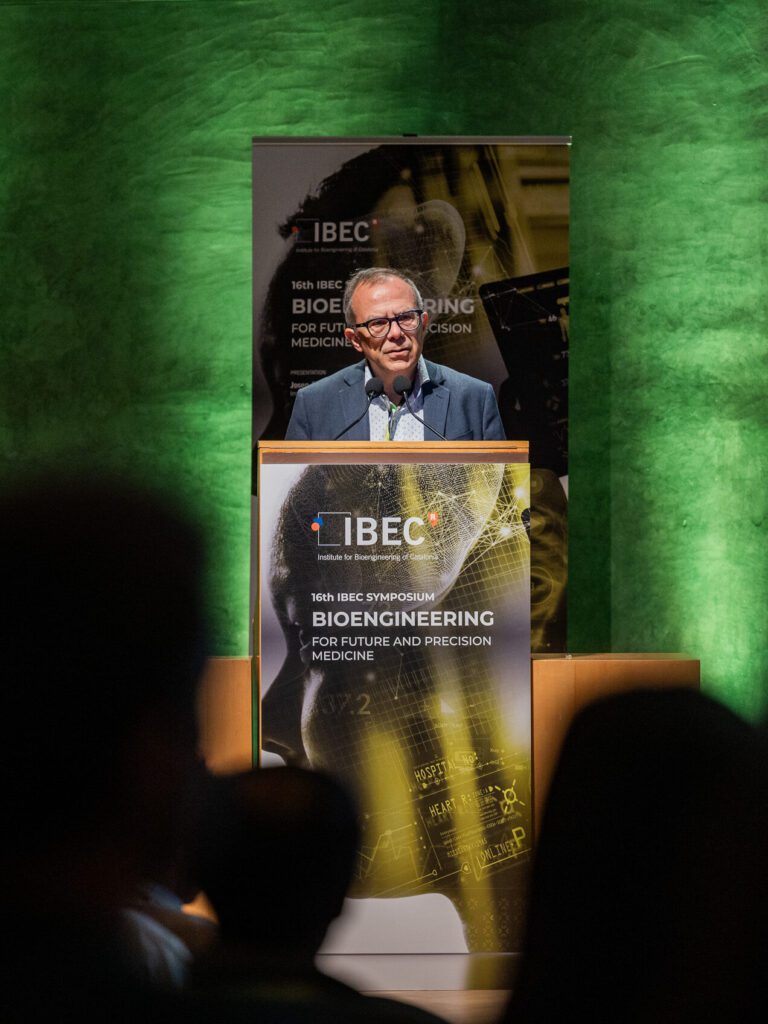
Biotechnology for future and precision medicine
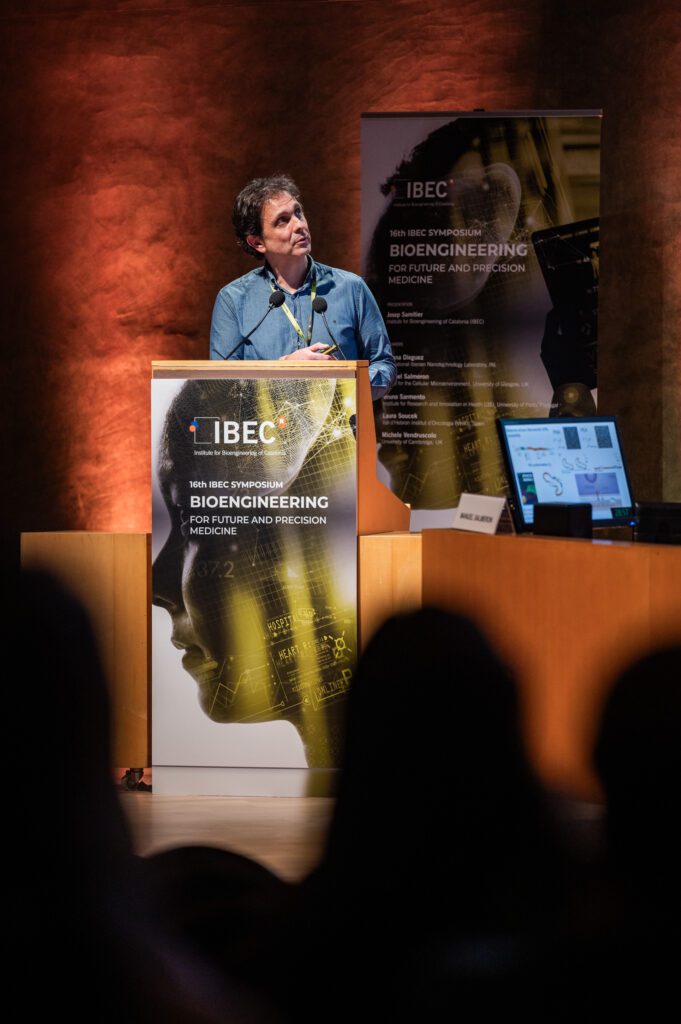
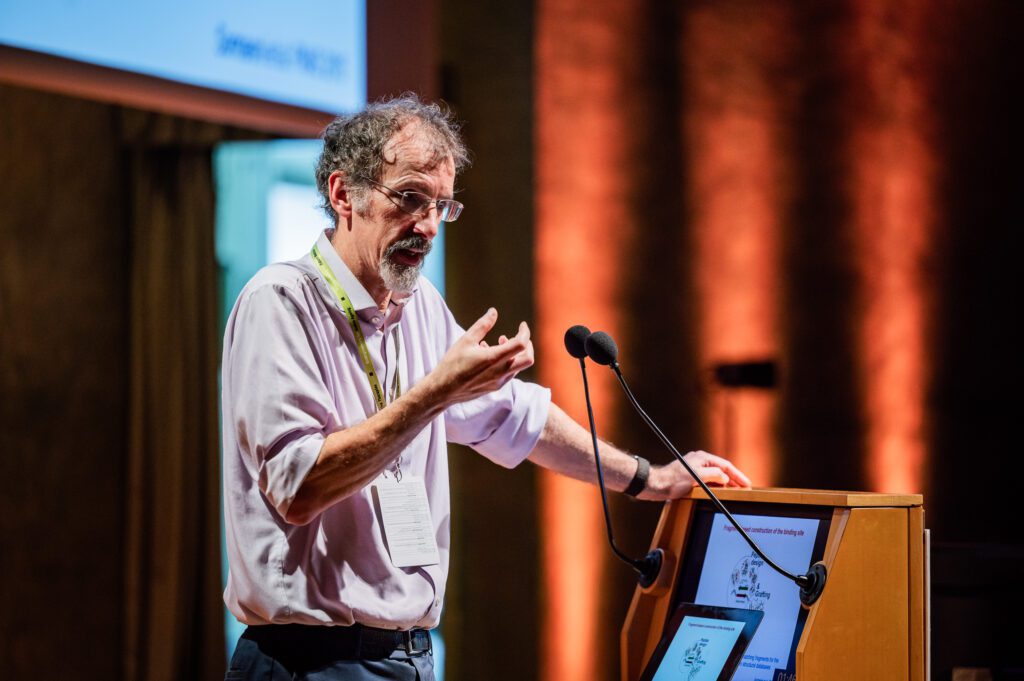


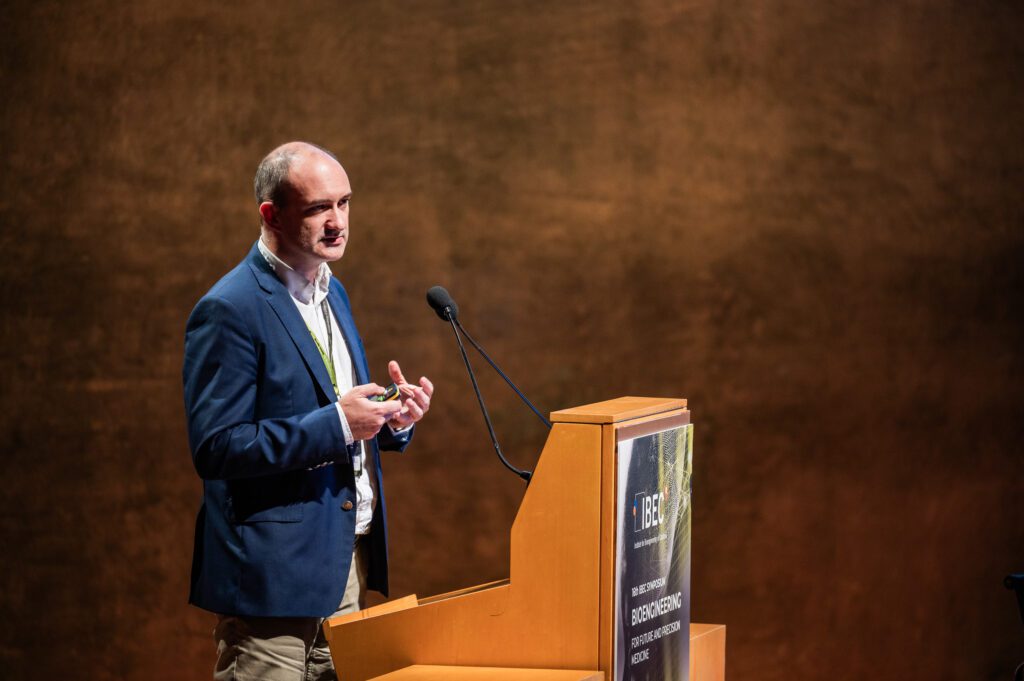
This year, there were five presentations by leading researchers in the field of biotechnology for precision medicine.
The first presentation was by Laura Soucek, a researcher at the Vall d’Hebron Institute of Oncology (VHIO), who discussed her research on designing an inhibitor for MYC, a key gene in the development of most tumors. Her talk also served as an example of laboratory translation to a company, as she shared her experience as the founder of the spin-off Peptomyc.
Soucek concluded her presentation with advice for younger researchers, saying, “Remember to celebrate the achievements, those are the ones that keep you going.'”
The next speaker was Michele Vendruscolo from the University of Cambridge, who explained his work in the treatment of neurodegenerative diseases, with a special emphasis on Alzheimer’s. Vendruscolo’s research describes therapeutic approaches based on thermodynamics and kinetics to address the issue that characterizes this type of pathology: aggregating proteins. He aims to use this proteins as a therapeutic target for the development of new drugs.
Next, it was the turn of Lorena Diéguez from the International Iberian Nanotechnology Laboratory (INL) in Portugal. During her presentation, Diéguez spoke about the advantages of using microfluidics-based devices and nanobiosensors for the early diagnosis of diseases using biomarkers found in body fluids. Her talk also provided another example of technology transfer, based on her experience as the founder of the spin-off RUBYnanomed.
Finally, Diéguez, who was a researcher at IBEC between 2007 and 2010, once again emphasized the importance of multidisciplinarity and stressed that ‘in research, collaboration is essential, and at IBEC, you have a wide variety of groups and cutting-edge facilities to foster such collaboration.’
In research, collaboration is essential, and at IBEC, you have a wide variety of groups and cutting-edge facilities to foster such collaboration.
Lorena Diéguez
The fourth presentation was given by Bruno Sarmiento from the Institute for Research and Innovation in Health (i3S) in Portugal. Sarmiento provided attendees with examples of multifunctional nanomedicines capable of crossing the blood-brain barrier. These medicines are presented as new alternatives for treating glioblastoma and multiple sclerosis, two brain diseases that currently have no cure.
Next, the round table took place, which in this edition focused on clinical translation. The discussion featured Javier Aparicio, Head of the Epilepsy Unit at SJD Barcelona Children’s Hospital; Nadia Saoudi, Resident Doctor at Vall d’Hebron Hospital and Researcher at the Colorectal Cancer group at VHIO; Clara Prats, Researcher at the Computational Biology and Complex Systems group at UPC and President of the Management Committee of the Interdisciplinary Group of Professionals Linked to Health (GIPS); Georgina Sorrosal, Director of the Innovation and Entrepreneurship Area of the College of Physicians of Barcelona (CoMB); and Jordi Martínez Quintanilla, Postdoctoral Researcher at VHIOThe guests talked about their personal experience and gave some advice to the audience on the practical application of scientific advances.
The fifth and final presentation of the day was delivered by Manuel Salmeron Sanchez, a former researcher at the University of Glasgow who has recently joined IBEC as a principal investigator. Salmerón explained how he and his team have successfully designed 3D polymers and hydrogels that enable them to study the interplay between mechanics (viscoelasticity) of the extracellular matrix and growth factor signalling. This knowledge aids them in understanding and controlling cell behavior, including fundamental processes such as cell migration and (stem) cell differentiation
Recognition of the work done
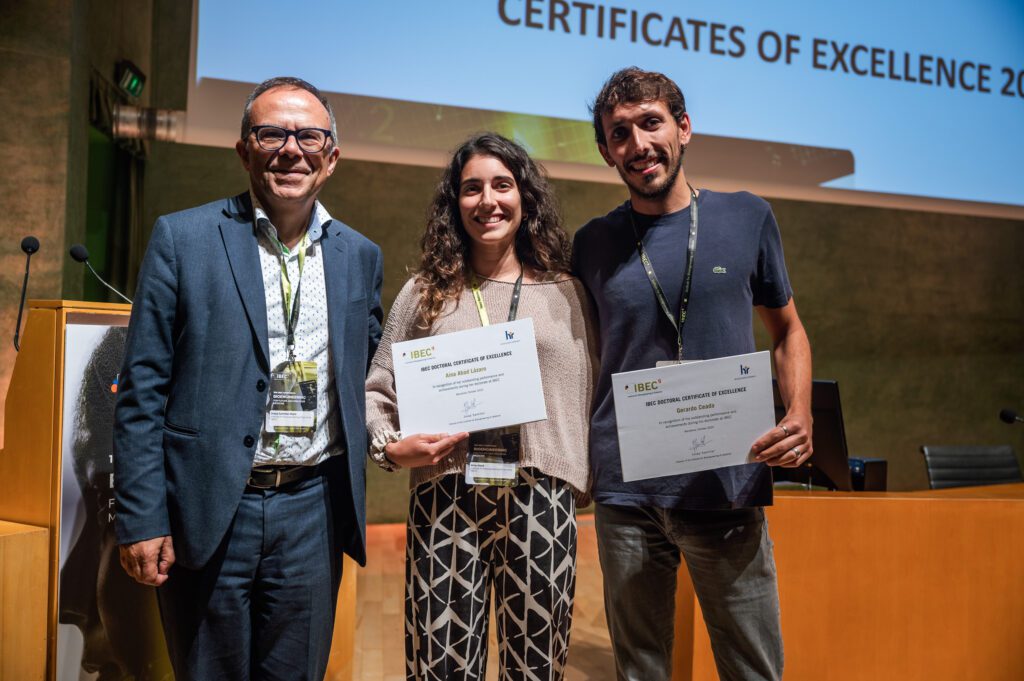
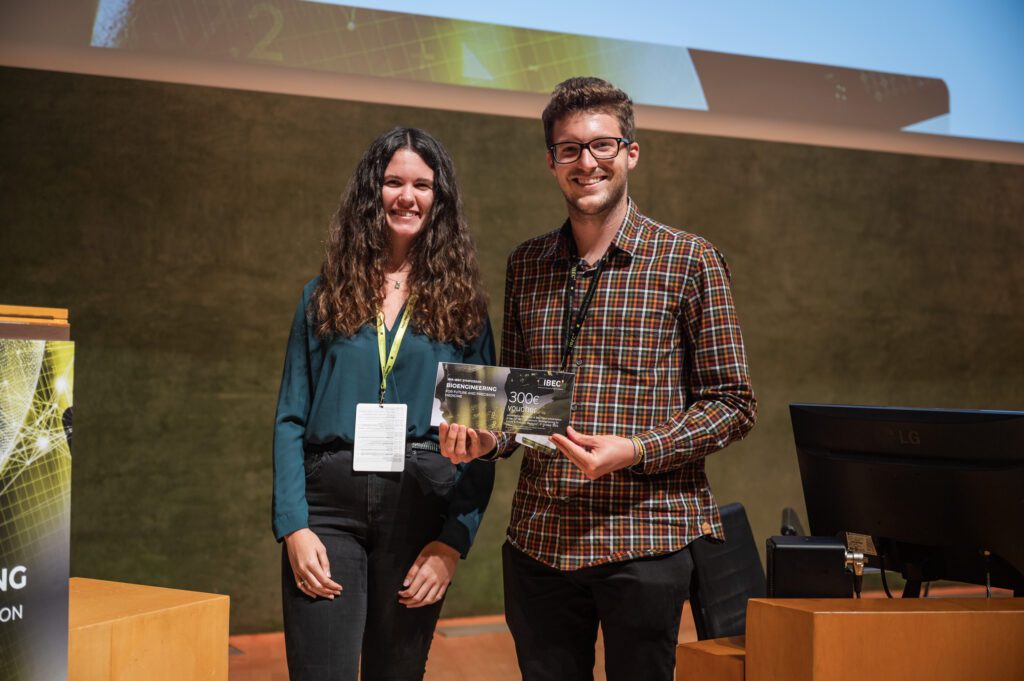
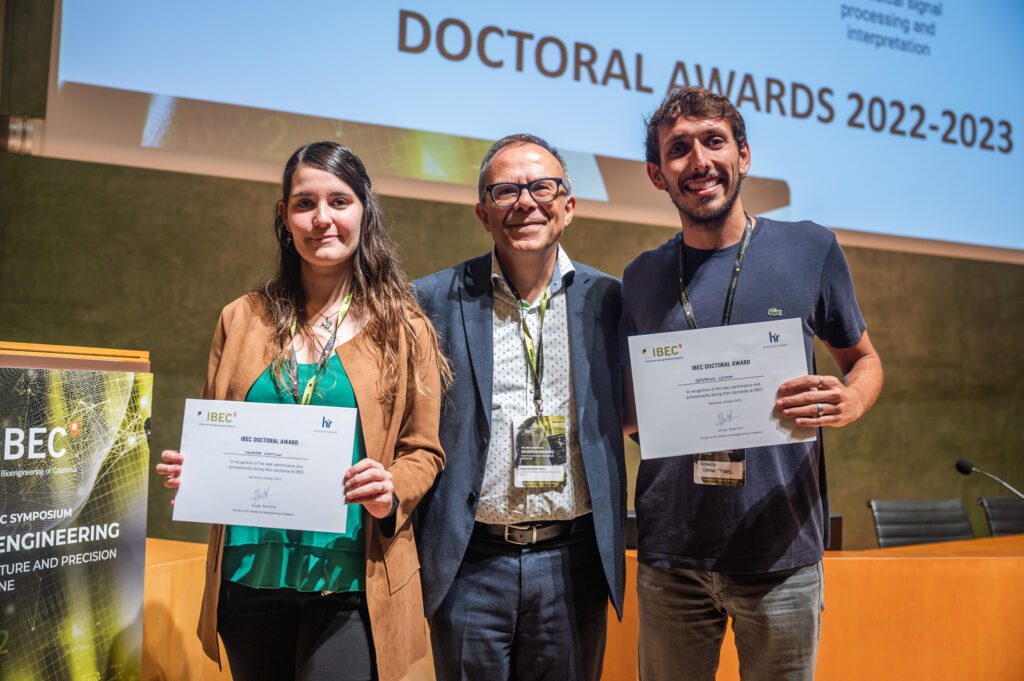
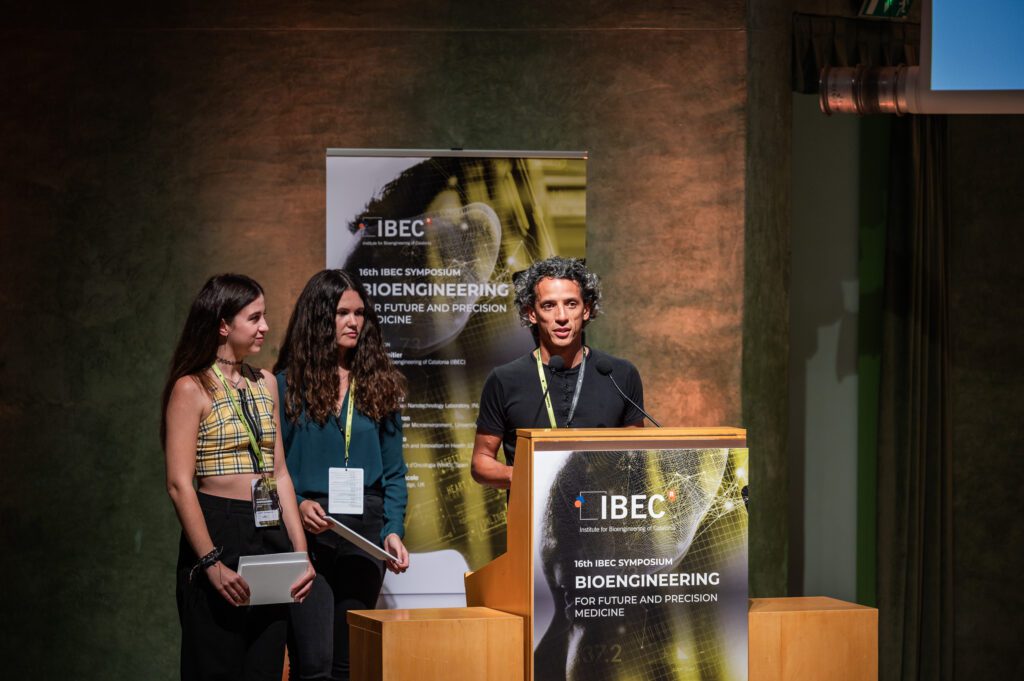
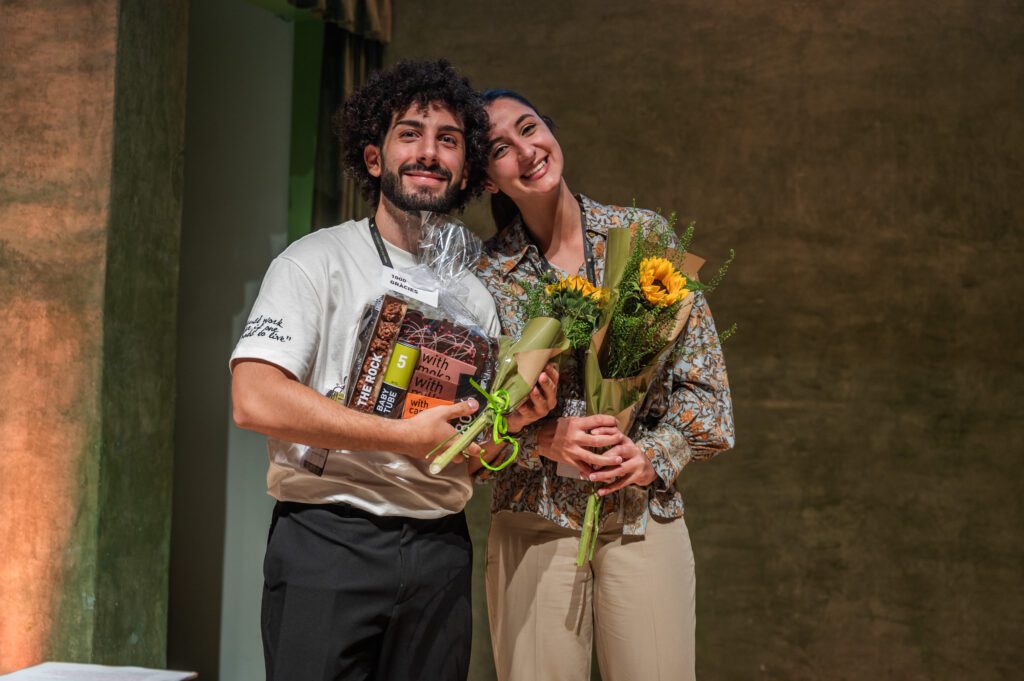
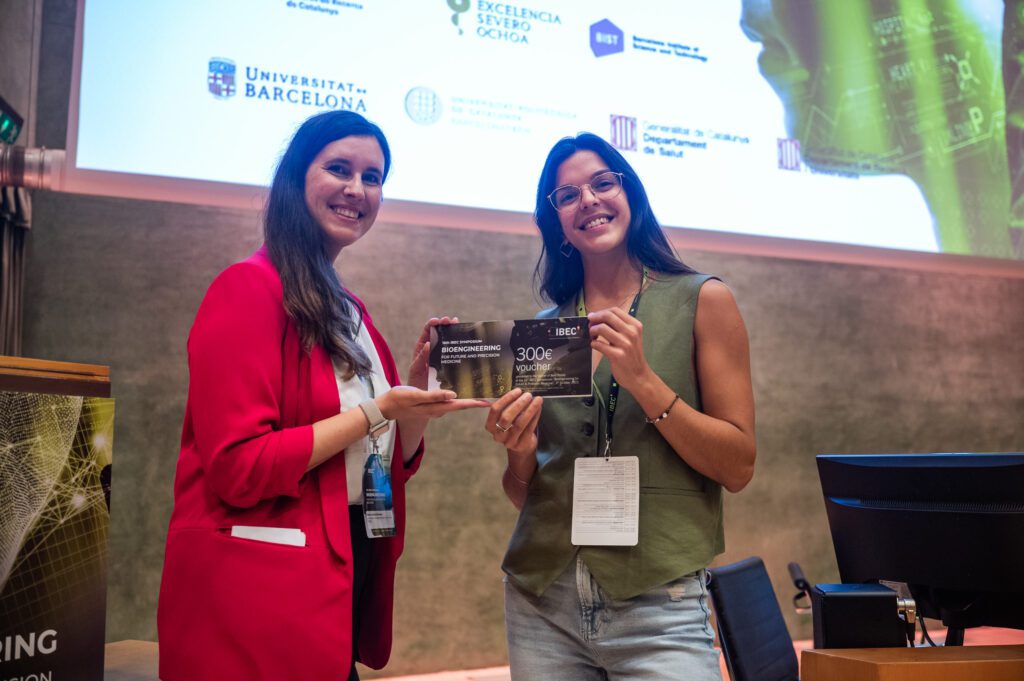
The day concluded with the awards ceremony.
Gerardo Ceada and Yolanda Castillo were awarded the ‘IBEC Doctoral Award’ in recognition of their outstanding performance and achievements during their PhD studies at IBEC.
Ceada completed his doctoral thesis on ‘Mechanics of crypt folding, tissue compartmentalization and collective cell migration in intestinal organoids’ in the Integrative Integrative Cell and Tissue Dynamics group, led by Xavier Trepat. On the other hand, Castillo’s thesis focused on the ‘Interpretation of Biomedical Signals and Smartphone Sensors for the Assessment of Trunk Function and Sleep Disorders in Patients with Spinal Cord Injuries’ in the Biomedical Signal Processing and Interpretation group, led by Raimon Jané
In addition, the excellent work of four doctoral students was recognized with the presentation of Certificates of Doctoral Excellence: Aina Abad from the Biomimetic Systems for Cell Engineering group, Albert Manzano and Enrico Almici from the Nanobioengineering group, and once again, Gerardo Ceada.
Another activity that has been a part of the symposium since its inception, fostering connections between researchers, is the poster session. Among the more than 80 posters presented, the prize for the best was awarded to Lara Victoria Aiassa and Tiziana Russo. Aiassa is a predoctoral researcher in IBEC’s Molecular Bionics group, led by Giuseppe Battaglia, and her poster addressed ‘Targeting macrophage polarization states for precision immunotherapy.’ Russo, a researcher in the Bioinspired Interactive Materials and Protocellular Systems group led by César Rodríguez Emmenegger, focused on ‘Super predatory ionically-linked comb polymers for engulfment of micro and nanoparticles’ in her poster.
Finally, Miquel Bosch, a predoctoral researcher in Trepat’s group, received the ‘Best Flash Presentation Award.’
During these quick presentations, IBEC scientists have the opportunity to explain their research to the public in just 5 minutes. This year, there were 15 talks divided into four thematic areas: cell engineering, mechanobiology, ICT for health, and nanomedicine. Bosch’s presentation focused on mechanobiology and was titled ‘An Optogenetic and Mechanical Approach to Control Synthetic Morphogenesis.’
